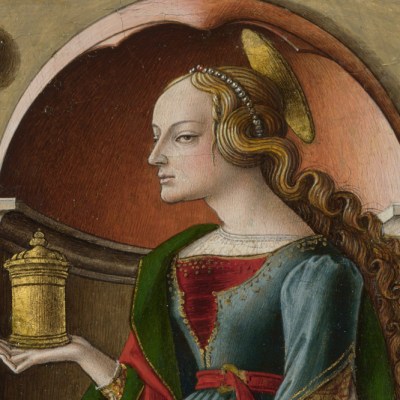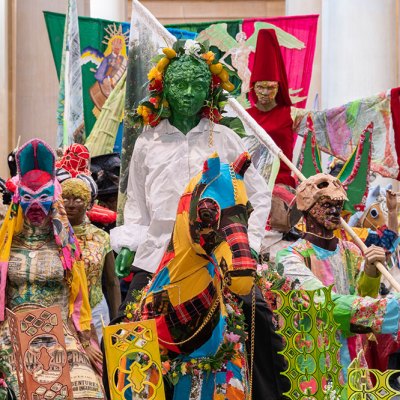Paula Rego was once asked in an interview about working from a visual source rather than say, a literary one, as she often did. ‘I subvert the master painting, always,’ she replied. ‘Not disrespectfully but I change the story so that a man hasn’t got the place of honour or a woman at the back comes forward.’ Unsurprisingly, the National Gallery’s ‘masculine collection’, as she described it, offered plenty of scope for the kind of intervention Rego relished when she became its first associate artist in 1990. Crivelli’s Garden (1990–91), a triumphant product of her time there, is now being rightly celebrated in a new exhibition at the gallery.
La Madonna della Rondine (The Madonna of the Swallow) (1491), Carlo Crivelli. National Gallery, London
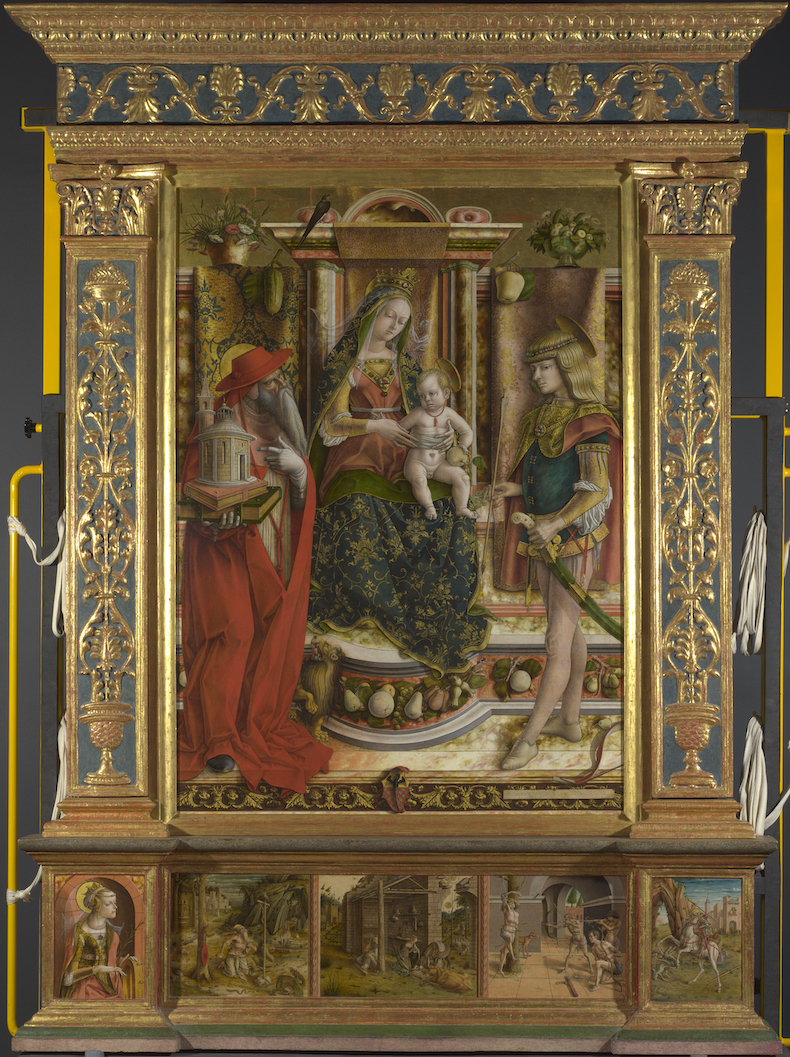
This display in Room 46 reunites Crivelli’s Garden with its inspiration: La Madonna della Rondine (The Madonna of the Swallow), a sumptuous altarpiece painted by Carlo Crivelli in 1491, in which the Virgin Mary sits above a predella of framed scenes from saints’ stories and the Nativity. Rego recreated the threshold-like effect of these depictions across more than nine metres of canvas, inviting the viewer to step into an ancient Mediterranean matriarchy, peopled with female saints and women of legend, where magic lives side-by-side with domestic industry. In colours drawn from the blue-and-white tiles of Rego’s native Portugal, the scene is bathed in sunlight and alive with immediacy. Brought forward by their monumental proportions are Saints Mary and Martha, the Virgin Mary and her cousin, Elizabeth; Judith after having dealt with Holofernes. The panel on the far right depicts scenes from the life of the Virgin Mary, while by the port to the left, seemingly cast in bronze, a hefty Delilah overcomes Samson with the stealth of a cat – and an actual cat plays with a ball of yarn nearby. (This being Rego, there are plenty of animals.)
Crivelli’s Garden (1990–91), Paula Rego. National Gallery, London. © Ostrich Arts Ltd

It’s not as eerie or sinister as you might expect from Rego, though. There isn’t even anything particularly bloodthirsty about the murderesses: Judith’s sack, presumably holding the head of Holofernes, is an unstained white. She holds it towards her young companion with an expression of mild regret, as if it contains something unpleasant discovered in the kitchen, and the girl responds with apparent distaste. A mood of peaceable activity reigns, of women talking, cleaning, learning, contemplating, drawing – and, when taking murderous revenge on men, looking surprisingly free from rage.
Crivelli’s Garden (detail; 1990–91), Paula Rego. National Gallery, London. © Ostrich Arts Ltd
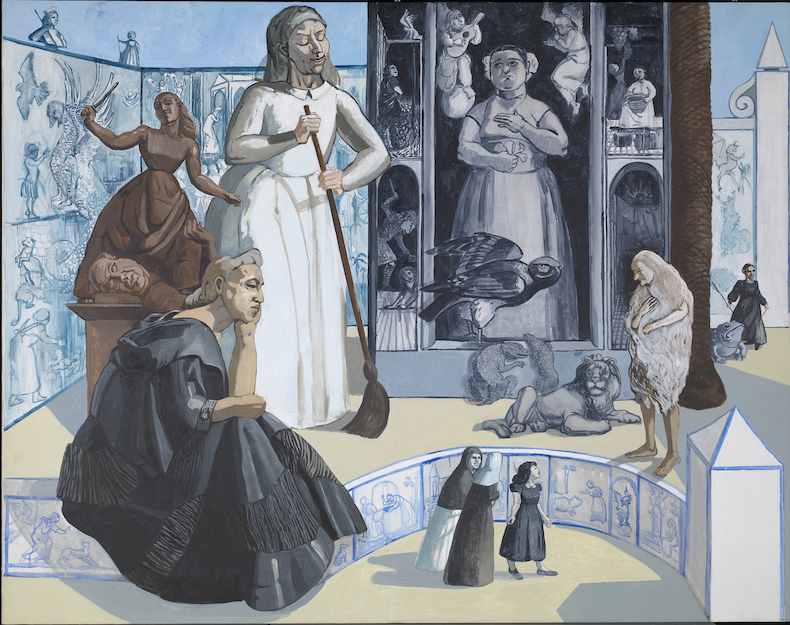
The idea of the Associate Artist position had been that Rego would get to know both the gallery’s collection and its staff, becoming part of the institution’s daily life. This sense of community spills over into Crivelli’s Garden, which includes portraits of several former employees of the gallery – some of Rego’s sketches from their sittings are on display, too. It seems no coincidence that the women Rego included all worked in the education department. Crivelli’s Garden is a repository of female experience and resilience, full of women passing on their knowledge. A grandmotherly figure supervises two girls at play, one of them painting; a girl in white reads aloud to an even smaller companion; the giant Elizabeth whispers the news of her pregnancy to Mary – the gravity of this information conveyed as much by her grip on her cousin’s arm as by the secretive way she conceals her mouth with her hand – while the ghosts of the future appear around them. In the lefthand panel, a mother holds her baby towards the fountain’s panel, tenderly overseeing its exploration of the world.
Much like Judy Chicago’s installation The Dinner Party (1974–79), which literally brings women to the table of history, the subversion of Crivelli’s Garden becomes apparent through accumulation – the impact of so many monumental women accrues gradually. It is a bit like walking through the corridors of an all-female college and slowly realising that all the eminent portraits on the walls are of women. The ordinariness is what makes it thrilling.
Crivelli’s Garden (detail; 1990–91), Paula Rego. National Gallery, London. © Ostrich Arts Ltd
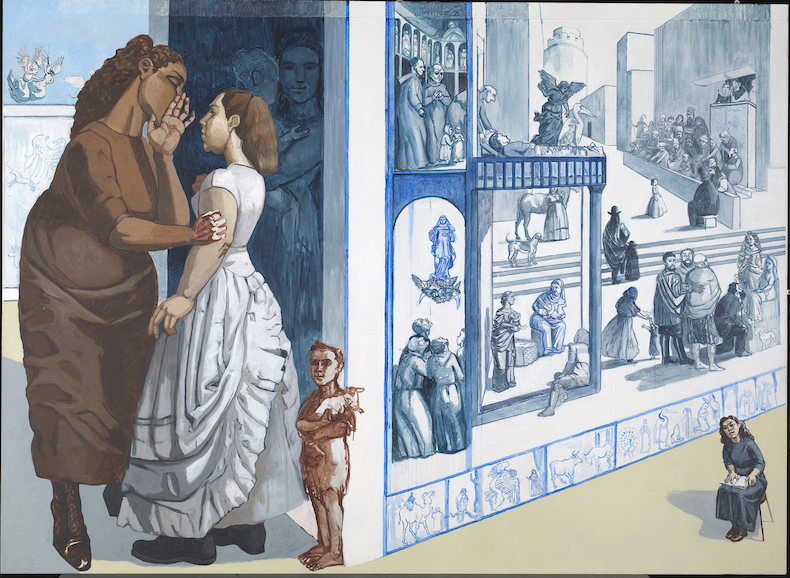
This is Rego in her element as a storyteller, celebrating the telling of tales. At the lower righthand corner a seated woman, a book in her lap, holds everything together. This reader peers out of the canvas, leaning towards the action as if to listen or to direct our attention towards it. Crivelli’s Garden is packed with allusions to biblical and classical tales, mediated through Rego’s sensibility, but it doesn’t really matter whether you know the references or not – you can intuit your own stories from this busy gathering. Go ahead and use your imagination: Rego certainly did.
‘Paula Rego: Crivelli’s Garden’ is at the National Gallery, London, until 29 October.


